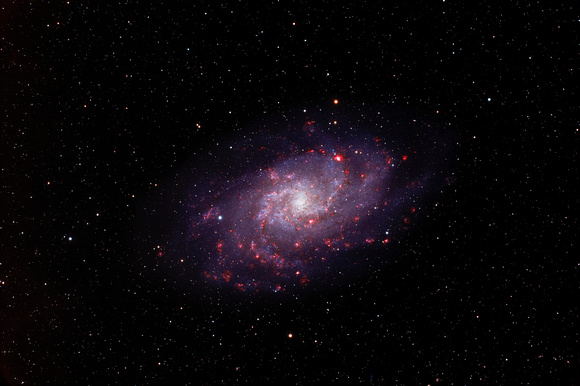M33 Triangulum Galaxy in LHRGB
Triangulum Galaxy
Askar 151phq; AP Mach2 GTO
ASI6200MM, - Baader 6.5nm NB CMOS opt. filters
H: (65 x 450s Bin 1, Gain 200)
R,G,B: (60,60,56 x 180s, Bin 1, Gain 100)
L: (101x150s, Bin 1, Gain 100)
Total integration time = 21.1 hrs (Sep 20,21; Oct 25,27-31; & Nov 22,23 2023)
The Triangulum Galaxy at 2.73 Mly distant, is only marginally farther away than the Andromeda Galaxy and is the third largest member of our local group of galaxies. It is also the farthest galaxy which we can resolve individual stars (other than super-nova explosions) with a back yard telescope. The ones we can resolve are likely massive stars or even star clusters. The galaxy itself is considered the farthest object that can be resolved with the naked eye.
From the abundant star formation currently (well, at least over 2 million years ago) taking place is evident in the abundant H emission signal (red/magenta), coming from the pinwheel shaped spiral arms. Many of these star forming regions take interesting shapes, forming loops and blobs – their glow being powered by the young stars they are creating. Such complex star forming areas often arise whithin a galaxy when it is being tidally disturbed by other galaxies. In the case of the Triangulum Galaxy, it is being pulled by the nearby Andromeda Galaxy (750,000 ly away) with which it will likely merge and may currently be a satellite galaxy.


